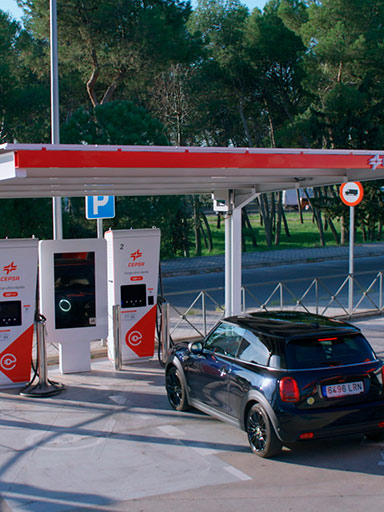- At an event organized by Cepsa, politicians from various parties and industry experts discussed consensus measures to address the main barriers to electric vehicle development and transportation decarbonization
- In 2023, only 12% of vehicles sold in Spain were electric, significantly below the European average of 21% and representing just 1.2% of the total fleet, making the push for electric vehicles an environmental, economic, and social priority
- During the session, proposals were made for initiatives such as creating a map of charging points, designing new strategies to lower the cost of electric vehicles, and establishing a single window to simplify administrative procedures
Among the proposals discussed at this meeting, which brought together political leaders from state, regional, and local levels, as well as experts, academics, and entrepreneurs, the creation of nationwide map identifying a core network of public roadside charging points stands out. There was also a call to make all charging points from other operators visible across the different apps, similar to the solution already implemented in Portugal, which provides comprehensive information about network availability and status.
According to the participants in this forum, developing a public network of charging points is critical to reducing dependence on private garage charging, since in Spain, unlike other countries, 65% of vehicles do not have this option. Experts believe that an equally accessible and widely distributed infrastructure, akin to the current network of traditional fuel stations that ensures adequate coverage in both high-traffic and rural areas, would encourage electric vehicle adoption. Such a network would help bring about a fair energy transition that would reach the entire population, avoiding inequalities based on geographical location and income level.
During the session, a number of strategies were proposed for lowering electric vehicle prices. First, by reforming the subsidy system and reinstating programs like the Plan Renove, which allows discounts to be applied directly at dealerships. This approach would help improve both the benefits and the public perception of the subsidies.
But participants also argued for the need to develop additional incentives, such as direct aid in the form of tax deductions, and to encourage companies to promote sustainable mobility in their fleets and among their employees. Other solutions were also proposed, such as social leasing (following the example of France) or public carsharing initiatives.
Another major consensus reached was the need to streamline and standardize the approval process for charging points and purchase subsidies between the autonomous communities and the different levels of government. Participants emphasized the importance of simplifying the administrative procedures for installing charging points, agreeing that creating a single window is essential for unifying and streamlining these processes. This measure would help make procedures more efficient and transparent, thus making it easier to invest in charging infrastructure and removing bureaucratic obstacles that currently delay the deployment of charging points by up to two years, despite the actual construction time being only two weeks. There was also a discussion about the need to simplify administrative procedures in order to speed up the reinforcement of the electricity grid in areas where high demand is expected. Speakers emphasized the importance of integrating charging infrastructure into general urban planning and recognizing it as an asset of public interest or utility. Another proposal was to set up a single digital assistance center that would be open to all companies promoting charging points, offering clear guidance on administrative processes.
Spain falls short of electromobility targets
Electric mobility adoption is still very limited in Spain. In 2023, only 12% of vehicles sold were electric, significantly below the European average of 21% and representing just 1.2% of the total car fleet.
Over 30,000 charging points have been installed in Spain, but only about 2,000 of these are fast or ultra-fast chargers, a significant barrier for long-distance travel and users who lack home charging options.
Today, vehicles are parked 96% of the time, and in big cities, the time spent looking for parking can account for up to 25% of the vehicle's usage time. E-mobility is driving the shift towards a non-ownership model (MaaS, Mobility as a Service), which helps reduce traffic, free up public space in cities, and lower emissions.
A “space” for working together to drive the energy transition forward
‘Energy Spaces’ is an initiative by Cepsa aimed at promoting active listening, knowledge sharing, and consensus building among various stakeholders involved in the energy transition. Cepsa uses this forum to bring institutional leaders, experts, and civil society representatives together to discuss and develop solutions that can drive the change to a more sustainable energy model.
This initiative is part of Cepsa's Positive Motion strategy to become a leader in the energy transition. To achieve this, the company is developing an extensive ultra-fast roadside charging network in Spain and Portugal and aims to be a leader in the production of green molecules - primarily green hydrogen and second-generation biofuels - in order to decarbonize heavy land, sea, and air transportation.




